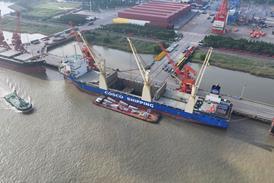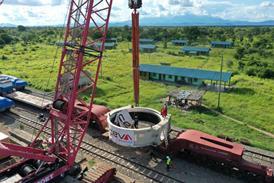Mammoet has launched Daisy – a system that allows customers to predict and monitor the output of carbon emissions from heavy lifting and transport projects.

The company said that while project planners have had to rely on estimates of total emissions (drawn from the make and model of equipment involved, and how long they have been used), Daisy draws on data taken directly from the embedded electronics of onsite equipment and transmitted over mobile networks from local devices. The data can then be accessed from any worldwide location, providing a clear audit trail for governments and other authorities.
Jacques Stoof, head of innovation at Mammoet, commented: “Daisy will be the most advanced system to accurately report CO2, NOX and NH3 emissions at equipment level at the operating location, improving on the generic approach the industry is currently using.
“Based on the actual reported emissions, clients will be given the option to choose for a more sustainable, less emitting fuel type in order to minimize their emissions footprint during construction”.
According to Mammoet, the system is currently being trialed on a fleet of mobile cranes in the Netherlands, and expects to introduce it on company projects in 2023, based on customer demand.
The launch of Daisy follows Mammoet’s partnership with energy company Vattenfall to develop new wind farm cranes powered from renewable sources.
















